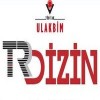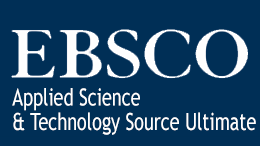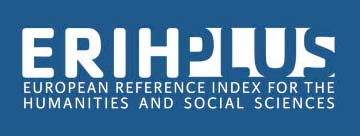Investigation of The Relationship Between Health Literacy and Attitude Towards Traditional and Complementary Medicine among Health Licensor Candidates
Abstract
Objective: Traditional and complementary medicine has started to gain more place in health services in recent years. The increase in its use makes it necessary to have information about its use. In this study, the relationship between health literacy and attitudes towards traditional and complementary medicine of prospective health undergraduates was examined.
Material-Method: In this cross-sectional study, health literacy levels of prospective health undergraduates, their attitudes towards TCM and the relationship between them were examined. A questionnaire was administered to students who were selected by stratified sampling method from students studying in six different departments of Kırıkkale University Faculty of Health Sciences. The questionnaires were analyzed.
Results: The study included 331 students. Most of the participating students were female (88.5%). The highest score on the health literacy scale was obtained by students from the Department of Social Work and the highest score on the TCM scale was obtained by nursing students. The students who participated in the study had a low level of education about TCM (5.7%), use of TCM products (19%) and a negative attitude towards TCM products (6.3%). There is a significant positive correlation between the scores obtained from the health literacy scale and the scores obtained from the attitude towards traditional and complementary medicine scale. However, this correlation is at a low level (r=.110, p<.05).
Conclusion: It was found that the number of health license candidates who received training related to TCM was low. It is thought that it would be beneficial to increase health literacy and knowledge about TCM in order for TCM products and methods, whose use has increased due to their inclusion in payment lists, to be beneficial for health.
Supporting Institution
TUBİTAK
Project Number
1919B012305220
References
- 1. Sönmez Cİ, Başer DA, Küçükdağ HN, et al. Tıp fakültesi öğrencilerinin geleneksel ve tamamlayıcı tıp ile ilgili bilgi durumlarının ve davranışlarının değerlendirilmesi. Konuralp Medical Journal. 2018;10(3):276-281.
- 2. Kaner G, Karaalp C, Seremet Kürklü N. Üniversite öğrencileri ve ailelerinde bitkisel ürün kullanım sıklığının ve bitkisel ürün kullanımını etkileyen faktörlerin belirlenmesi. Türk Hijyen ve Deneysel Biyoloji Dergisi. 2016;74(1):37-54.
- 3. Erdem S, Eren PA. Tedavi amacıyla kullanılan bitkiler ve bitkisel ürünlerin yan etkileri. Türk Hijyen ve Deneysel Biyoloji Dergisi. 2009;66(3):133-141.
- 4. WHO (World Health Organization). General Guidelines for Methodologies on Research and Evaluation of Traditional Medicine. Geneva: World Health Organization, 2000.
- 5. Khalaf AJ, Whitford DL. The use of complementary and alternative medicine by patients with diabetes mellitus in bahrain: A cross-sectionalstudy. BMC ComplementAltern-Med. 2010:(10):35.
- 6. Solmaz T, Altay B. Üniversite öğrencilerinin tamamlayıcı ve alternatif tedavi yöntemlerini kullanma durumları. Pam Med J. 2019;12(3):387-393.
- 7. Ateş S, Güngör A. Çocuk hekimlerinin geleneksel ve tamamlayıcı tıp tedavisi uygulamaları ile ilgili bilgi ve tutumlarının değerlendirilmesi. Van Sağlık Bilimleri Dergisi. 2021;14(1):7-18.
- 8. Kırsoy H, Pirinçci E, Kurt O. Tıp fakültesi öğrencilerinin geleneksel ve tamamlayıcı tıp konusundaki bilgi, tutum ve davranışları. Ahi Evran Medical Journal. 2021;6(2):106-114.
- 9. Yurdakul ES, Sarı O. Geleneksel ve tamamlayıcı tıp uygulamalarının etik yönden incelenmesi. Mersin Üniversitesi Tıp Fakültesi Lokman Hekim Tıp Tarihi ve Folklorik Tıp Dergisi. 2020;10(3):404-414.
- 10. Şarışen Ö, Çalışkan D. Fitoterapi: Bitkilerle tedaviye dikkat (!). Sted. 2005;14(8):182-187
- 11. Sørensen K, Pelikan JM, Rothlin F, et al. Health literacy in Europe: Comparative results of the European Health Literacy Survey (HLS-EU). European Journal of Public Health, 2015;25(6):1053–1058.
- 12. Nielsen-Bohlman L, Panzer AM, Kindig DA. Health literacy: A prescription to end confusion. National Academies Press (US). PMID: 25009856;2004.
- 13. Kaya M, Yılmaz FÖ. Bireysel Özellikler, sağlık okuryazarlığı ve genel sağlık durumu arasındaki ilişki. Mehmet Akif Ersoy Üniversitesi Sosyal Bilimler Enstitüsü Dergisi. 2020;(33):113-122.
- 14. Safeer RS, Keenan J, Health Literacy: The gap between physicians and patients. American Academy of Family Physicians. 2005;72(3):463-468.
- 15. Paasche-Orlow MK, Gazmararian JA, Parker RM. The prevalence of low health literacy. In Journal of General Internal Medicine. 2004;(19):224-224.
- 16. Nutbeam D. Health literacy as a public health goal: A challenge for contemporary health education and communication strategies into the 21st century. Health Promot Int. 2000;(15):259-267.
- 17. Berkman ND, Sheridan SL, Donahue KE, et al. Low health literacy and health outcomes: An updated systematic review. Annals of Internal Medicine. 2011;155(2):97-107.
- 18. Betz CL, Ruccione K, Meeske K, et al. Health literacy: A pediatric nursing concern. Pediatric Nursing. 2008;34(3):231-239.
- 19. Scott TL, Gazmararian JA, Williams MV, et al. Health literacy and preventive health care use among medicare enrollees in a managed care organization. Medical Care. 2002;(40):395-404.
- 20. IOM (Institute of Medicine). Committee on the use of complementary, alternative medicine by the American Public Institute of Medicine, Board on Health Promotion, & Disease Prevention. Complementary and alternative medicine in the United States. National Academy Press; 2005.
- 21. Bains SS, Egede LE. Association of health literacy with complementary and alternative medicine use: A cross-sectional study in adult primary care patients. BMC Complementary and Alternative Medicine. 2011;11(1):138.
- 22. Dursun Sİ, Vural B, Keskin B, et al. Yetişkinlerde Geleneksel/tamamlayıcı tıp tutumu ile sağlık okuryazarlığı ve sağlık algısı arasındaki ilişki. Halk Sağlığı Hemşireliği Dergisi. 2019;1(1):1-10.
- 23. Ayraler A, Yavuz E, Oruç MA, et al. Tıp fakültesi öğrencilerinin geleneksel ve tamamlayıcı tıp hakkındaki bilgi düzeyleri ve görüşleri. Türkiye Aile Hekimliği Dergisi. 2020;24(4):196-202.
- 24. Köse E, Oturak G, Ekerbiçer H. Bir grup tıp fakültesi öğrencisinde geleneksel ve tamamlayıcı tıp tutumu ve sağlık okuryazarlığı ilişkisinin incelenmesi. Sakarya Tıp Dergisi. 2021;11(2):373-380.
- 25. Aydemir Acar G, Kılıç BB, Meydan Acımış N. Determination of knowledge, attitudes and behaviors towards traditional and complementary medicine in patients applying to Pamukkale University medical faculty hospital polyclinics. International Journal of Traditional and Complementary Medicine Research. 2021;2(3):153-161.
- 26. Altunışık R, Coşkun R, Bayraktaroğlu S, et al. Sosyal bilimlerde araştırma yöntemleri SPSS uygulamalı. Sakarya, Sakarya Yayıncılık;2012.
- 27. Tanrıöver MD, Yıldırım HH, Ready FND, et al. Sağlik okuryazarliği araştırması. Sağlık-Sen Yayınları, 6, 42-7; 2014.
- 28. McFadden KL, Hernandez TD, Ito TA. Attitudes toward complementary and alternative medicine influence its use. Explore. 2010;6(6):S380-388
- 29. Köse E, Ekerbiçer HÇ, Erkorkmaz Ü. Traditional and complementary medicine attitude scale: Study Of Validity And Reliability, Oral Presentation, HESTOUREX World Health Sport Tourism Congress & Exgibition, April 6-9, 2017.
- 30. George D, Mallery P. Frequencies. In IBM SPSS Statistics 23 Step By Step, Routledge; 2016.
- 31. Shahzad Hussain SH, Farnaz Malik FM. Integration of complementary and traditional medicines in public health care systems: Challenges and methodology. Journal of Medicinal Plant Research. 2013; 7(40):2952-2959.
- 32. WHO (World Health Organisation). Traditional Medicine. Executive Board. 111th Session Provisional agenda item 5.7. Report by the Secretariat. Accessed June 22, 2024.
- 33. Bülbül SH, Turgut M, Köylüoğlu S. Çocuklarda tıp dışı alternatif uygulamalar konusunda ailelerin görüşleri. Çocuk Sağlığı ve Hastalıkları Dergisi. 2009;52(4):195-202.
- 34. Kutlu S, Ekmekçi TR, Köşlü A, et al. Dermatoloji polikliniğine başvuran olgularda tamamlayıcı ve alternatif tıp yöntemlerinin kullanımı. Türkiye Klinikleri Journal of Medical Sciences. 2009;29(6):1496-1502.
- 35. Akçay F, Aktürk Z. Gastrointestinal sistem hastalıklarında tamamlayıcı ve alternatif tedaviler. Türkiye Klinikleri Journal of Family Medicine Special Topics. 2010;1(3):68-75.
- 36. Buran G, Kaçan CY. Hemşirelik öğrencilerinin sağlık okuryazarlığı ile geleneksel ve tamamlayıcı tıp tutumları arasındaki ilişkinin incelenmesi. Balıkesir Sağlık Bilimleri Dergisi. 2023;12(1):118-125.
- 37. Owen‐Smith A, McCarty F, Hankerson‐Dyson D, et al. Prevalence and predictors of complementary and alternative medicine use in African‐Americans with acquired immune deficiency syndrome. Focus on Alternative and Complementary Therapies. 2012;17(1):33-42.
- 38. Gardiner P, Mitchell S, Filippelli AC, et al. Health literacy and complementary and alternative medicine use among underserved inpatients in a safety net hospital. Journal of Health Communication. 2013;18(sup1):290-297.
- 39. Ilgaz A, Gözüm S. Tamamlayıcı sağlık yaklaşımlarının güvenilir kullanımı için sağlık okuryazarlığının önemi. DEUHFED. 2016;9(2):67-77.
Abstract
Project Number
1919B012305220
References
- 1. Sönmez Cİ, Başer DA, Küçükdağ HN, et al. Tıp fakültesi öğrencilerinin geleneksel ve tamamlayıcı tıp ile ilgili bilgi durumlarının ve davranışlarının değerlendirilmesi. Konuralp Medical Journal. 2018;10(3):276-281.
- 2. Kaner G, Karaalp C, Seremet Kürklü N. Üniversite öğrencileri ve ailelerinde bitkisel ürün kullanım sıklığının ve bitkisel ürün kullanımını etkileyen faktörlerin belirlenmesi. Türk Hijyen ve Deneysel Biyoloji Dergisi. 2016;74(1):37-54.
- 3. Erdem S, Eren PA. Tedavi amacıyla kullanılan bitkiler ve bitkisel ürünlerin yan etkileri. Türk Hijyen ve Deneysel Biyoloji Dergisi. 2009;66(3):133-141.
- 4. WHO (World Health Organization). General Guidelines for Methodologies on Research and Evaluation of Traditional Medicine. Geneva: World Health Organization, 2000.
- 5. Khalaf AJ, Whitford DL. The use of complementary and alternative medicine by patients with diabetes mellitus in bahrain: A cross-sectionalstudy. BMC ComplementAltern-Med. 2010:(10):35.
- 6. Solmaz T, Altay B. Üniversite öğrencilerinin tamamlayıcı ve alternatif tedavi yöntemlerini kullanma durumları. Pam Med J. 2019;12(3):387-393.
- 7. Ateş S, Güngör A. Çocuk hekimlerinin geleneksel ve tamamlayıcı tıp tedavisi uygulamaları ile ilgili bilgi ve tutumlarının değerlendirilmesi. Van Sağlık Bilimleri Dergisi. 2021;14(1):7-18.
- 8. Kırsoy H, Pirinçci E, Kurt O. Tıp fakültesi öğrencilerinin geleneksel ve tamamlayıcı tıp konusundaki bilgi, tutum ve davranışları. Ahi Evran Medical Journal. 2021;6(2):106-114.
- 9. Yurdakul ES, Sarı O. Geleneksel ve tamamlayıcı tıp uygulamalarının etik yönden incelenmesi. Mersin Üniversitesi Tıp Fakültesi Lokman Hekim Tıp Tarihi ve Folklorik Tıp Dergisi. 2020;10(3):404-414.
- 10. Şarışen Ö, Çalışkan D. Fitoterapi: Bitkilerle tedaviye dikkat (!). Sted. 2005;14(8):182-187
- 11. Sørensen K, Pelikan JM, Rothlin F, et al. Health literacy in Europe: Comparative results of the European Health Literacy Survey (HLS-EU). European Journal of Public Health, 2015;25(6):1053–1058.
- 12. Nielsen-Bohlman L, Panzer AM, Kindig DA. Health literacy: A prescription to end confusion. National Academies Press (US). PMID: 25009856;2004.
- 13. Kaya M, Yılmaz FÖ. Bireysel Özellikler, sağlık okuryazarlığı ve genel sağlık durumu arasındaki ilişki. Mehmet Akif Ersoy Üniversitesi Sosyal Bilimler Enstitüsü Dergisi. 2020;(33):113-122.
- 14. Safeer RS, Keenan J, Health Literacy: The gap between physicians and patients. American Academy of Family Physicians. 2005;72(3):463-468.
- 15. Paasche-Orlow MK, Gazmararian JA, Parker RM. The prevalence of low health literacy. In Journal of General Internal Medicine. 2004;(19):224-224.
- 16. Nutbeam D. Health literacy as a public health goal: A challenge for contemporary health education and communication strategies into the 21st century. Health Promot Int. 2000;(15):259-267.
- 17. Berkman ND, Sheridan SL, Donahue KE, et al. Low health literacy and health outcomes: An updated systematic review. Annals of Internal Medicine. 2011;155(2):97-107.
- 18. Betz CL, Ruccione K, Meeske K, et al. Health literacy: A pediatric nursing concern. Pediatric Nursing. 2008;34(3):231-239.
- 19. Scott TL, Gazmararian JA, Williams MV, et al. Health literacy and preventive health care use among medicare enrollees in a managed care organization. Medical Care. 2002;(40):395-404.
- 20. IOM (Institute of Medicine). Committee on the use of complementary, alternative medicine by the American Public Institute of Medicine, Board on Health Promotion, & Disease Prevention. Complementary and alternative medicine in the United States. National Academy Press; 2005.
- 21. Bains SS, Egede LE. Association of health literacy with complementary and alternative medicine use: A cross-sectional study in adult primary care patients. BMC Complementary and Alternative Medicine. 2011;11(1):138.
- 22. Dursun Sİ, Vural B, Keskin B, et al. Yetişkinlerde Geleneksel/tamamlayıcı tıp tutumu ile sağlık okuryazarlığı ve sağlık algısı arasındaki ilişki. Halk Sağlığı Hemşireliği Dergisi. 2019;1(1):1-10.
- 23. Ayraler A, Yavuz E, Oruç MA, et al. Tıp fakültesi öğrencilerinin geleneksel ve tamamlayıcı tıp hakkındaki bilgi düzeyleri ve görüşleri. Türkiye Aile Hekimliği Dergisi. 2020;24(4):196-202.
- 24. Köse E, Oturak G, Ekerbiçer H. Bir grup tıp fakültesi öğrencisinde geleneksel ve tamamlayıcı tıp tutumu ve sağlık okuryazarlığı ilişkisinin incelenmesi. Sakarya Tıp Dergisi. 2021;11(2):373-380.
- 25. Aydemir Acar G, Kılıç BB, Meydan Acımış N. Determination of knowledge, attitudes and behaviors towards traditional and complementary medicine in patients applying to Pamukkale University medical faculty hospital polyclinics. International Journal of Traditional and Complementary Medicine Research. 2021;2(3):153-161.
- 26. Altunışık R, Coşkun R, Bayraktaroğlu S, et al. Sosyal bilimlerde araştırma yöntemleri SPSS uygulamalı. Sakarya, Sakarya Yayıncılık;2012.
- 27. Tanrıöver MD, Yıldırım HH, Ready FND, et al. Sağlik okuryazarliği araştırması. Sağlık-Sen Yayınları, 6, 42-7; 2014.
- 28. McFadden KL, Hernandez TD, Ito TA. Attitudes toward complementary and alternative medicine influence its use. Explore. 2010;6(6):S380-388
- 29. Köse E, Ekerbiçer HÇ, Erkorkmaz Ü. Traditional and complementary medicine attitude scale: Study Of Validity And Reliability, Oral Presentation, HESTOUREX World Health Sport Tourism Congress & Exgibition, April 6-9, 2017.
- 30. George D, Mallery P. Frequencies. In IBM SPSS Statistics 23 Step By Step, Routledge; 2016.
- 31. Shahzad Hussain SH, Farnaz Malik FM. Integration of complementary and traditional medicines in public health care systems: Challenges and methodology. Journal of Medicinal Plant Research. 2013; 7(40):2952-2959.
- 32. WHO (World Health Organisation). Traditional Medicine. Executive Board. 111th Session Provisional agenda item 5.7. Report by the Secretariat. Accessed June 22, 2024.
- 33. Bülbül SH, Turgut M, Köylüoğlu S. Çocuklarda tıp dışı alternatif uygulamalar konusunda ailelerin görüşleri. Çocuk Sağlığı ve Hastalıkları Dergisi. 2009;52(4):195-202.
- 34. Kutlu S, Ekmekçi TR, Köşlü A, et al. Dermatoloji polikliniğine başvuran olgularda tamamlayıcı ve alternatif tıp yöntemlerinin kullanımı. Türkiye Klinikleri Journal of Medical Sciences. 2009;29(6):1496-1502.
- 35. Akçay F, Aktürk Z. Gastrointestinal sistem hastalıklarında tamamlayıcı ve alternatif tedaviler. Türkiye Klinikleri Journal of Family Medicine Special Topics. 2010;1(3):68-75.
- 36. Buran G, Kaçan CY. Hemşirelik öğrencilerinin sağlık okuryazarlığı ile geleneksel ve tamamlayıcı tıp tutumları arasındaki ilişkinin incelenmesi. Balıkesir Sağlık Bilimleri Dergisi. 2023;12(1):118-125.
- 37. Owen‐Smith A, McCarty F, Hankerson‐Dyson D, et al. Prevalence and predictors of complementary and alternative medicine use in African‐Americans with acquired immune deficiency syndrome. Focus on Alternative and Complementary Therapies. 2012;17(1):33-42.
- 38. Gardiner P, Mitchell S, Filippelli AC, et al. Health literacy and complementary and alternative medicine use among underserved inpatients in a safety net hospital. Journal of Health Communication. 2013;18(sup1):290-297.
- 39. Ilgaz A, Gözüm S. Tamamlayıcı sağlık yaklaşımlarının güvenilir kullanımı için sağlık okuryazarlığının önemi. DEUHFED. 2016;9(2):67-77.
Details
| Primary Language | English |
|---|---|
| Subjects | Traditional, Complementary and Integrative Medicine (Other) |
| Journal Section | Research Articles |
| Authors | |
| Project Number | 1919B012305220 |
| Publication Date | April 25, 2025 |
| Submission Date | August 1, 2024 |
| Acceptance Date | February 17, 2025 |
| Published in Issue | Year 2025 Volume: 6 Issue: 1 |
IJTCMR
International Journal of Traditional and Complementary Medicine Research





